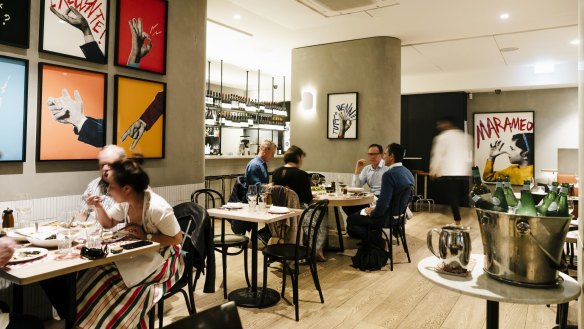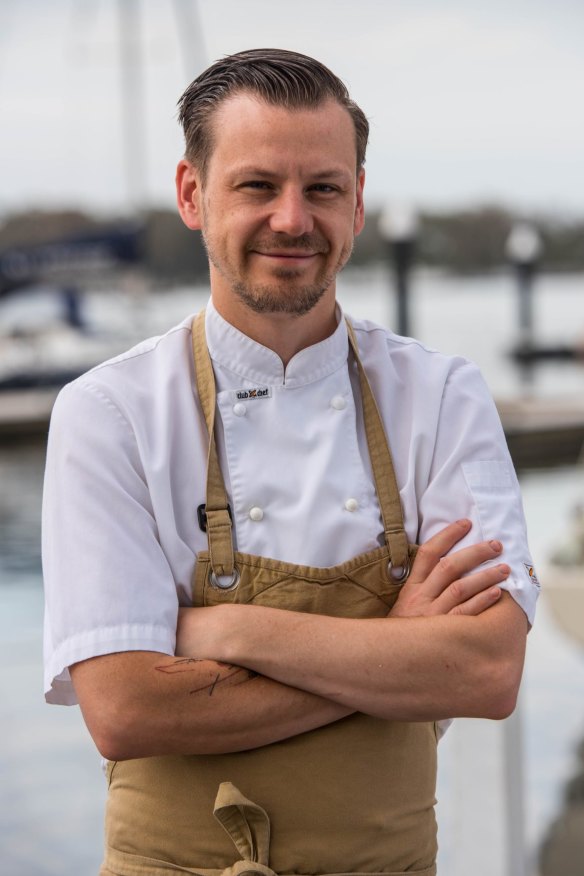'No good for city restaurants': Victorian venues adapt to latest post-lockdown restrictions

As Victorians celebrate the end of the state's fifth lockdown, owners of restaurants, cafes, pubs and bars are being cautious in their optimism. While the easing of restrictions means all hospitality businesses can reopen from Wednesday, there are density restrictions and visitor caps that put a big dent in businesses' bottom lines.
Perhaps the biggest lesson of this latest lockdown is that some restrictions, such as density limits, are likely to be a new fact of life.
From July 28, venues can seat one person per four square-metres with a maximum of 100 guests allowed at each venue. Office worker numbers are capped at 25 per cent and there are no crowds allowed at sporting or cultural events.

"The 25 per cent capacity in the office is no good for city restaurants," says Joe Mammone, who owns CBD restaurants Il Bacaro and Marameo, and Bar Carolina in South Yarra. "You may as well close your doors for lunch."
He's also concerned about the density restrictions, which are undoubtedly the biggest dampener on revenue for hospitality.
"The smaller venues suffer the most. At Il Bacaro, I need eight staff to open up the door, but I'm only allowed 18 people in that restaurant [under restrictions]. How many times can I turn the tables over to cover the staff cost?"

Small venues such as Ima Project, a 25-seat cafe in Carlton, benefit from the rule that allows a venue less than 100 square metres to seat 25 people without a density quotient. Manager Ako Miura is less fazed by the density restrictions and more concerned about staffing. The venue added parklet dining this year with local and state government assistance, which boosts capacity but requires an extra staff member.
"In a way we did increase our labour post-COVID," says Miura, who owns the cafe with partner James Spinks. "However, we did get much busier somehow this past year. Maybe we're lucky because we're not in the CBD and lots of people are working from home."
What does the prospect of future lockdowns or ongoing restrictions mean for an industry already operating with slim profit margins?
Many owners, including Mark and Victoria Briggs of Sardine in East Gippsland, have already tweaked their business model. Last year's first wave of infections prompted the pair to reduce Sardine's trading hours from six days to five, and to introduce a second sitting for each service. Now they're used to it, the extra sitting is working well for both customers and the business.
"I don't think this will be the last lockdown, unfortunately. It's just something we have to adapt to," he says.
Miura has already streamlined Ima's menu once to reduce the hours of preparation required. But staffing challenges may mean simplifying further. "We do less prep so we can focus more on quality."
At Hemingway's Wine Room in East Melbourne, which opened between Victoria's first and second lockdowns, the team is more accustomed to operating with lockdowns than without.
"This will be our fifth reopening," says co-owner Ashleigh Dyer. "We've never really known what business-as-usual is."
The restaurant has two dining rooms which allows them to operate with their usual numbers.
"We have to just keep going and be ready for lockdowns," says Dyer. "There's no surprise in them anymore."
Dyer remains upbeat and hopes people continue booking restaurants, even after the jubilation of emerging from lockdown wears off.
"Hopefully the hangover of lockdown isn't as long this time. We usually find that it's really busy the first weekend and then it drops off for the next three to four weeks as people get back into their lives."
After the success of the restaurant-quality pasta and ready-to-heat meals he offered during lockdown last year, restaurateur Joe Mammone is adding a permanent retail offer.
"The business model keeps changing every month, every week," he says. "The new normal is we just don't know. But I know we'll get through it."
Restaurant reviews, news and the hottest openings served to your inbox.
Sign up- More:
- Restaurant news
